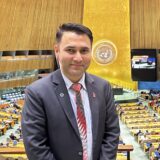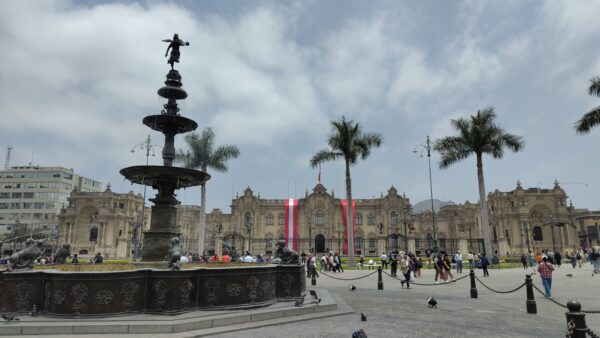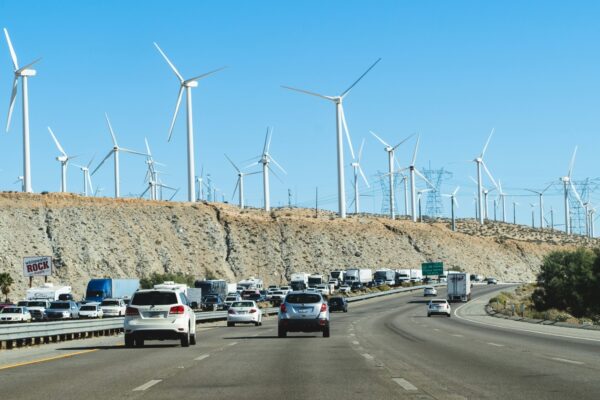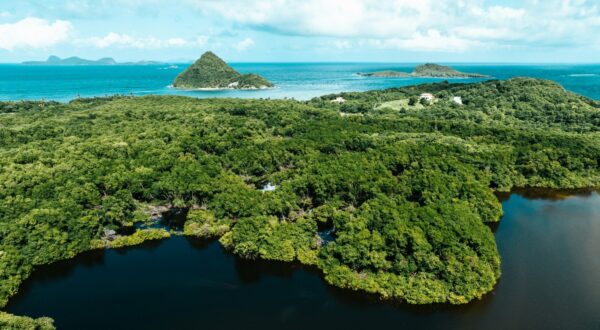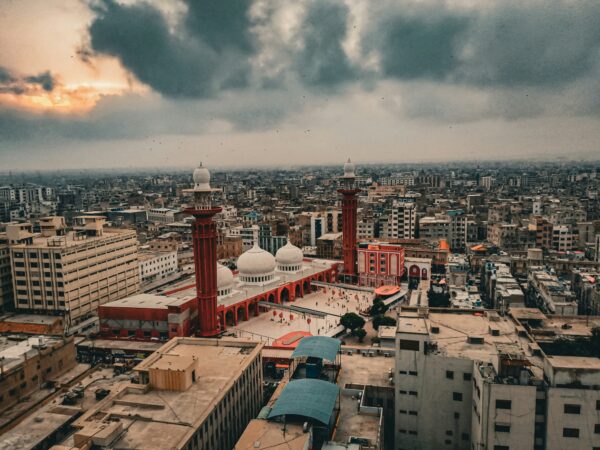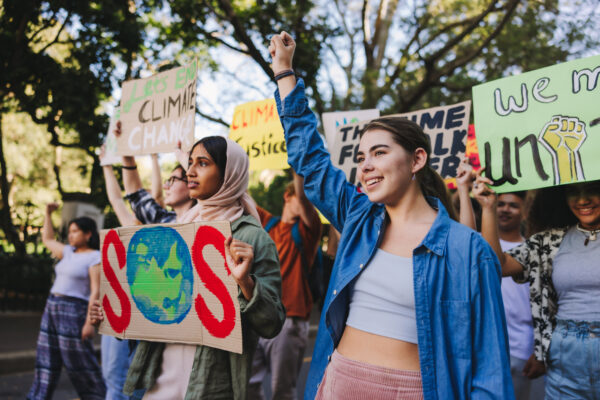What did we just agree to? The COP29 outcome
This COP is already being reflected on as one of the most difficult in the history of the negotiations. And the final text has not made it all worth it. So, what was agreed? And what does it mean for addressing the climate crisis and the work to come next year on the road to COP30 in Belém?
Share
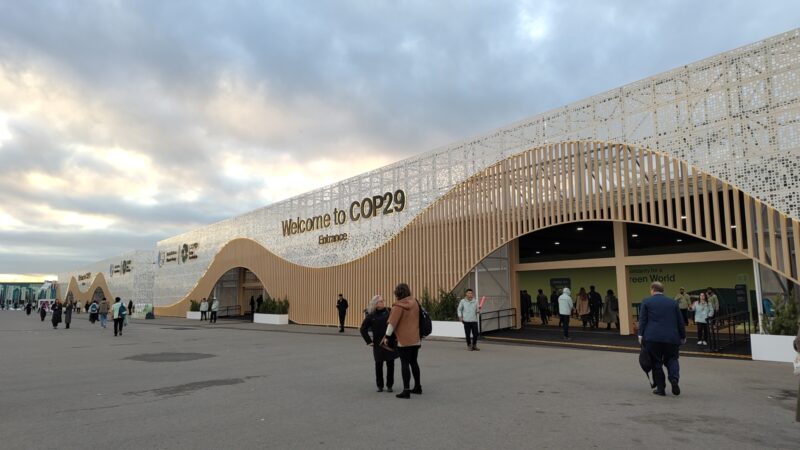
By the time the gavel comes down during the final plenary at any COP, the biggest feeling is often relief – the prospect of sleep and going home. But relief this year was tempered.
This COP is already being reflected on as one of the most difficult in the history of the negotiations. And the final text has not made it all worth it. So, what was agreed? And what does it mean for addressing the climate crisis and the work to come next year on the road to COP30 in Belém?
Geopolitical headwinds
It’s worth beginning with the context in which this COP took place, much of which set the stage for the outcome.
Wars, economic challenges and an election year in much of the world meant that tensions were high going into this finance COP. Inflation, ironically fuelled by our dependence on fossil fuels, added to the strain. Developed governments were wary of how much climate finance they could sign up for, while developing governments were all the more aware of why, and how badly, they needed it.
This was also the second year in a row that the negotiations were shepherded by a government with significant fossil fuel – oil and gas – export interests. During the COP it was revealed that the Presidency showed considerable bias by allowing a representative from Saudi Arabia to directly edit text under the Just Transition negotiating track. This came after a New York Times exposé on the Saudi ‘wrecking ball’ strategy at the climate talks.
This kind of courtesy was not afforded to all negotiating blocs. The Least Developed Countries Group and the Alliance of Small Island Developing States walked out of consultations on the final Saturday over a lack of transparency in consultations and after a draft text on climate finance was circulated by the Presidency, which flatly ignored their key asks.
Less than two days after the gavel came down, the Azerbaijani Presidency bravely stepped forward to blame the West for how it ran the talks, insisting that their team of negotiators wanted to do things differently, but couldn’t because of developed countries. Despite this being hard to believe, and contradicting the experience of most of those involved, using the platform of the COP Presidency to retroactively engage in a blame game is another bad sign of an increasingly fractured international landscape.
A new goal on climate finance
This COP’s measure of success was tied to an outcome on the new collective quantified goal (NCQG) on finance. This would be the first officially negotiated finance goal, and an update of the $100 billion goal that had been introduced as a last-ditch attempt by the US to salvage the 2009 talks in Copenhagen and was not negotiated by all parties.
Since its inception, the $100 billion collective mobilisation goal for climate finance has faced strong criticism for not being aligned with the actual needs of developing countries and for lacking a clear definition of what qualifies as climate finance, making it difficult to assess whether the goal has been met or not. Perhaps tellingly, even with generous allowances for the inclusion of existing development aid as climate finance, the goal was not met in 2020, as was promised, but two years later in 2022.
The new collective quantified goal on finance’s structure was largely previewed as an ‘onion’ by developed countries with a larger investment goal of at least $1.3 trillion per year from both public and private sources, and an inner core goal, that developing countries hoped by to take the form of grants, publicly funded by developed countries.
A clear goal for grants, or grant-equivalent funding, would have been a big improvement on the USD 100 billion goal, as this also counted loans as mobilised climate finance. If grants were all that counted as climate finance, the amount that would count towards the USD 100 billion goal would have been much lower. Many developing countries are highly indebted and are being forced to take aid as loans, largely from multilateral development banks, in the wake of climate disasters, compounding their indebtedness and setting back development goals. The idea that climate finance be something through which lenders profit via interest paid on debt is incredibly controversial and raises questions about climate justice.
Loans are also overwhelmingly provided for mitigation projects where there is often a business case and profits to be made, but not for adaptation and loss and damage (a priority for developing countries), which typically do not offer pure financial returns, though obviously can have real economic benefits.
In the end, the core of the new collective goal may be hollow. At best it is far too small. The text landed on at least $300 billion per year by 2035, giving a good decade before the goal is expected to come into its own, and completely ignoring the very real effects of inflation in the meantime, which reduces the value to around $180-200 billion per year in 2020 dollars. Crucially, it will include finance from:
“a wide variety of sources, public and private, bilateral and multilateral, including alternative sources”
Meaning that loans will still be included as climate finance. So too will private finance. The only real difference between this and the bigger $1.3 trillion investment goal, is that the smaller core is going to serve as a non-binding benchmark, whereas the $1.3 trillion is far more ephemeral in nature.
On access to finance, the decision includes non-binding references to simplify access and prioritises the most vulnerable and those with capacity constraints, such as least developed countries and small island developing states, for public and grant-based resources and highly concessional finance, particularly for adaptation and responding to loss and damage.
Mitigation and adaptation are highlighted in the paragraph outlining the goal, but loss and damage only gets a look in much further down, with parties acknowledging that there is a gap in finance for loss and damage. This is another key miss for an area of climate finance that could struggle to attract funding from private sources, which was a priority for vulnerable countries.
After years of hard negotiations, developing countries did not walk away with much at all. As a reminder, fossil fuel subsidies topped over a trillion in 2022.
Mitigation work programme torpedoed at COP29
It is a terrible irony that mitigation is fast becoming the political third rail at COPs. The COP29 Mitigation Work Programme (MWP) outcome featured nothing substantive. Oil-rich emerging economies blocked any language from last year’s Global Stocktake in the text drafts, arguing it was out of scope of the MWP. As a result, key conclusions, like transitioning away from fossil fuels, couldn’t be reaffirmed. By the end of the two weeks, even references to 2023 as the hottest year on record and the goal of limiting warming to 1.5°C were removed from the preamble.
Unless there is sufficient mitigation action within this decade to keep 1.5°C in reach, no amount of climate finance will be enough, as hard limits to adaptation are in sight at 1.5°C and loss and damage costs accelerate dramatically with every additional increment of warming.
The Just Transition Work Programme was another track in which mitigation language could have been included. However, as with the MWP, references to the Global Stocktake were pulled – which we know now to have been unilaterally removed by the Saudi delegation. Despite late-night sessions and negotiators’ willingness to make submissions, the Presidency refused to revise the draft, leaving Just Transition with no outcome at all.
Progress on the implementation of Global Stocktake, blocked
The first Global Stocktake at COP28 agreed, among other things, that countries should move to align their nationally determined contributions with 1.5°C and begin to transition away from fossil fuels.
But the follow-up to the Global Stocktake in this year’s talks suffered a similar fate to mitigation. The discussion on finalising the scope and mandate of the UAE Dialogue on the implementation of the Global Stocktake was forwarded to next year’s mid-year talks in Bonn, after a progressive group of developing and developed countries came together to push back against a continuous attempt to narrow the focus of the mandate away from any discussion of previously agreed language, which would include transitioning away from fossil fuels.
Push to undermine the IPCC’s 7th Assessment role in the second global stocktake
In the talks there were continuous attempts to undermine the integrity of the Intergovernmental Panel on Climate Change (IPCC) as a key input for future Global Stocktakes by trying to pave the way for other pieces of evidence to enter the process.
‘The best available science’ in UNFCCC decisions refers to the work of the IPCC. By trying to introduce other sources of evidence, some governments are intentionally overlooking the work that the IPCC does to build consensus with authors and governments on climate science, literally with line-by-line approval. By opening the door to evidence that will inevitably be more contentious, this could lead to increased division on the science, and the scientific basis of the UNFCCC decisions.
The IPCC will convene its next Plenary session in early 2025 to take crucial decisions on the contents of its next Assessment Reports, and whether they will be delivered in time for the second Global Stocktake. A clear reaffirmation of last year's invitation in the Global Stocktake decision for the IPCC, "to consider how best to align its work with the second and subsequent global stocktakes" and "to provide relevant and timely information for the next global stocktake" (1/CMA.5 paragraph 184.) was a contentious item at COP29. Postponing this decision also means that further detail on how the second, and future, Global Stocktakes could be informed by the best available science from the IPCC was not given.
Potential loopholes in Article 6
Nearly a decade after Paris, the remaining rules for the carbon market – Article 6.2 on cooperative approaches and Article 6.4 on the international carbon market – have been largely completed. These rules could help raise ambition through regular checks and balances to ensure environmental integrity and avoid double counting, but overall are inadequate to prevent bad actors from doing the bare minimum.
In particular, there are major concerns around the potential effectiveness of the review process that is meant to act as a major check to prevent double counting and overselling. If this system is ineffective in doing so, the rules could lead to double counting.
There is nothing in this decision preventing the inclusion of forest offsets, which are not permanent, in carbon markets. Fossil fuel emissions, which remain in the atmosphere for millennia, should not be offset with forest and land sinks which are not permanent. There is a worry that ocean offsets, for which methodologies are still underdeveloped, will also be included.
However, there is opportunity for additional work and input on further standards, tools and guidelines on non-permanence and reversals under Article 6.4. The CMA requested the Article 6.4 Supervisory Body to expedite its work on these crucial topics. The CMA also requested additional scientific and technical expertise to feed into such discussions – and the Supervisory Body should be held to this.
In addition to the above there were process concerns. Some of the Article 6 rules got rushed through by the COP Presidency in the opening plenary in order to get a win on the board early on in the COP, which sets a precedent for future decisions taken.
The bare minimum for the Global Goal on Adaptation
The Global Goal on Adaptation saw some agreement on streamlined indicators, which at one stage were numbered over 7000. These indicators should now number no more than 100, and should be globally applicable with a menu of nationally applicable indicators. Further work will now go ahead to settle on what these should be.
The big disagreement between parties was on whether means of implementation (aka money) should be considered, with developed countries wanting this to stay in the climate finance track of the talks. Developing countries demanded the need for indicators to measure means of implementation for adaptation in addition to adaptation action for assessing the progress of the global goal on adaptation. Indicators on means of implementation were ultimately included as enabling factors for the implementation of adaptation action.
Transformational adaptation was another sticking point with some governments that focused on semantics around the definition of transformational adaptation. Some developing countries also wanted more ambitious references to transformational adaptation removed from the text, given the lacklustre promises by developed countries that transformational adaptation would be beneficial to developing countries. The final text instead recognises the importance of both incremental and transformation adaptation – which barely serves to progress this issue.
Interestingly, COP29 established the Baku high-level dialogue on adaptation, to be convened on the margins of subsequent COP sessions. The aim of this high-level dialogue is to identify ways of enhancing implementation of the UAE Framework for Global Climate Resilience. This high-level dialogue could possibly elevate adaptation as a political priority for governments in the future and could serve to ramp up much needed ambition on adaptation – both action and support. But this of course remains to be seen.
The road to Belém and COP30
Overall, it seemed that those voices looking to lower ambition won the day across all the negotiating tracks at COP29. A very difficult pill to swallow considering escalating climate impacts and resulting suffering, especially amongst the most vulnerable.
Governments must submit new 2035 NDCs by February next year, ensuring they align with the 1.5°C limit. For many, this will necessitate revisiting 2030 targets, as delayed action this decade means many pathways to 1.5°C go out the window. As per the Paris Agreement, they must show for the first time that their targets represent the highest possible ambition. They must also respond to the Global Stocktake goals and present clear plans for transitioning away from fossil fuels.
Much work needs to be done to build momentum towards the next COP. Civil society at the national level will need to push their governments to submit ambitious NDCs. Governments will need to make the case to their electorates of the urgent need for climate action. And with the Brazilian President signalling his intentions of climate talks with high ambition, we must all capitalise on this opportunity to push the needle on climate action.


